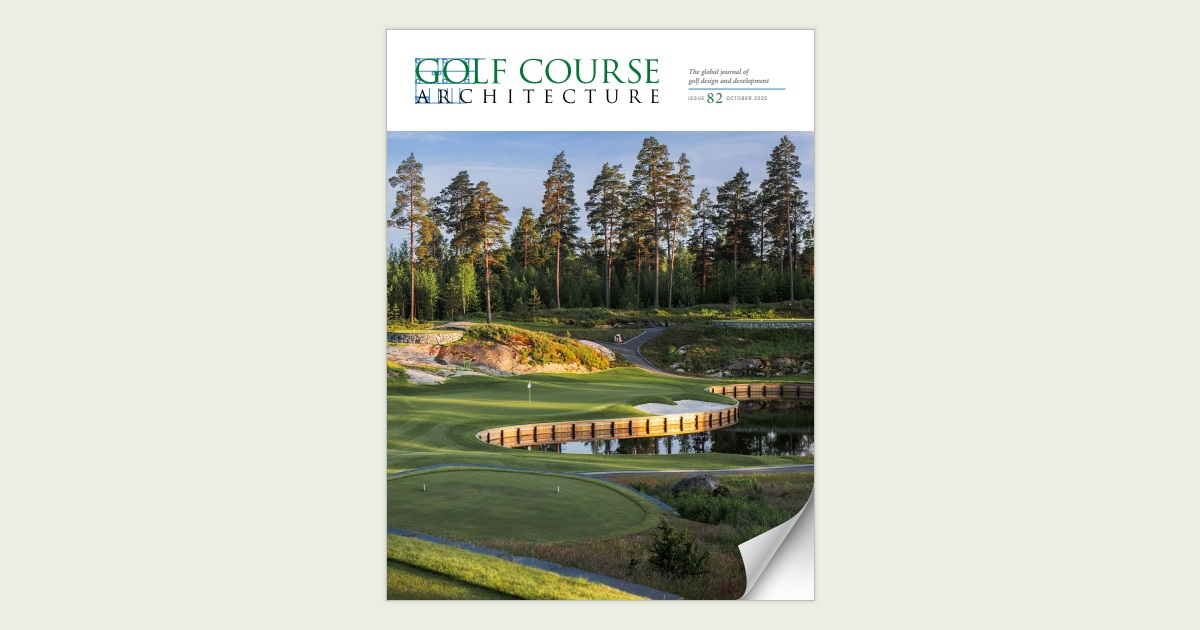62 Any number of voices in the golf industry have spent a lot of time in recent years proclaiming the need for more ‘alternative golf’ facilities: that is to say, facilities that are not full-size eighteen-hole golf courses. The problem is that it isn’t easy to make a return on investment on golf facilities of any kind, and ‘alternative facilities’ is code for places that are quicker and cheaper to play than full-sized courses. Cheaper means less revenue, especially since there seems still to be a mindset among golfers that anything that is not a full-sized eighteen-hole course is a lesser experience (and therefore worth less money). Combine that with the simple fact that the world already has many thousands of golf courses which, having been constructed many years ago, have long since amortised their development costs, and it is easy to see why developing alternative facilities, though superficially attractive, is not the most appealing proposition for many investors. Rock Golf is rather different. Located in the municipality of Siunto, about 25 miles west of Finland’s capital Helsinki, it is a nine-hole par-three course. Though almost entirely surrounded by the 54-hole Pickala club, it is not connected with it, except in that developer Kari Karvinen is a long-time member – indeed a board member – of Pickala. The site, which totals 45 hectares (111 acres), of which 17 hectares are used for golf, was not used for any of the Pickala courses, because it was thought to be too difficult – for which, as the course’s name hints, read rocky. The course was originally the brainchild of local businessman Jussi Nurmio. He was friendly with Karvinen, who was, at the time, retired after a long career as an entrepreneur in a number of businesses. He called his friend, and asked him, ‘Do you want to build the world’s best par-three course with me?’ Karvinen says he thought about it for around 30 seconds before saying ‘yes’, but that if Nurmio had simply asked him to build a par-three course, he would have declined. Talk about an elevator pitch! Nurmio had already been in contact with the Finnish golf architect Lassi Pekka Tilander, and he was contracted to design the course. The project was launched in February 2022, originally as a standalone golf course, and the rest of 2022 was spent clearing the site. Most of the course and infrastructure was constructed in 2023; a local contractor handled bulk earthworks, and NV Golf, the Finnish arm of the wellknown European contractor Nelson & Vecchio, handled the golf build, with shaper Graham Foster doing a lot of the work. Rock was seeded early in the 2024 season, and it opened in June 2025. During the build, Karvinen bought Nurmio out, and became the sole owner. At some point during the process, the developers realised they had enough land to incorporate a housing component into Rock; now, two companies, Rock Golf and Rock Properties, own different parts of the site, and, at the time of GCA’s visit, the roads that will serve the housing development were under construction. Rock has unarguably been built to a very high standard. The entire golf course site has been sandcapped: 20 centimetres (eight inches) of sand in most of the play areas and 30cm on greens. Where the site was not the eponymous rock, it was mostly clay, so the sandcapping was probably sensible. Those involved with the course are coy about how much blasting was done as part of the build, admitting it was more than originally intended. A lot of ‘kuntta’ – Finnish heather – has been transplanted onto the site. Most of the bunkers have it on the outof-play edge, and it is elsewhere on the site too – and it has done what heather generally does on golf courses, which is to help embed the course in its site and make it look as though it belongs there. The bunkers themselves are lined with the CapillaryFlow system – including the Wash Box, which will be used to ensure the sand stays clean and in good condition – and edged using Durabunker. ROCK GOLF
RkJQdWJsaXNoZXIy NzQ1NTk=






